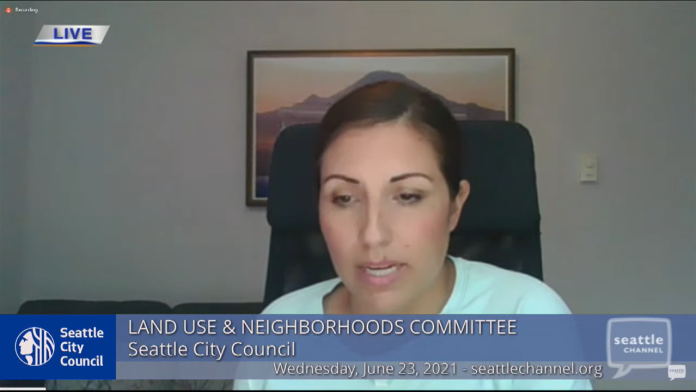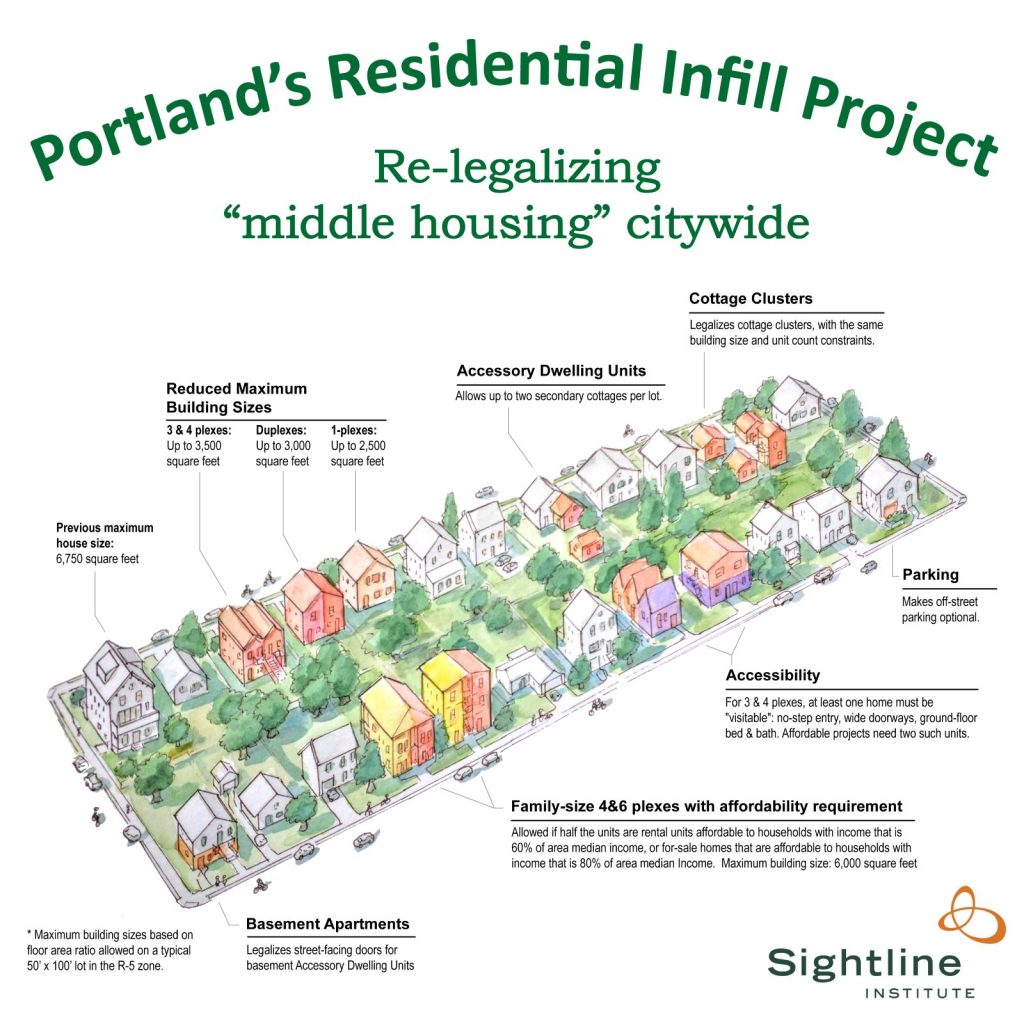
In November 2018, Councilmember Teresa Mosqueda, with the backing of housing advocates like us, succeeded in getting $500,000 added to the City budget to fund a racial equity analysis of the Seattle’s urban village growth strategy. That report was due in December 2019. That deadline came and went and then the pandemic hit three months later, which gave the Durkan administration a convenient excuse to continue to delay.
That report — which is now 18 months late — was supposed to finally be delivered to the City Council’s land use committee today. However, the Office of Planning and Community Development (OPCD) asked for yet another extension. Both housing advocates and Mosqueda expressed their frustrations and urged no further delays. They hope to receive the report in mid-July.
Mosqueda: No more delays issuing equity report
“We cannot afford any additional delays given that this critical report must be made public so that it will help us lay the foundation of what is needed in the Comprehensive Plan update,” Mosqueda said during the meeting. “That process begins this year. This report is critical for helping us understand and chart a course that makes sure we are on a path to true equity in our zoning policies. So that we can really understand the fundamental aspects of our zoning policies are where there are pitfalls.”
The Comprehensive Plan Major Update is due in 2024, but it will take two years leading up to it to put together the outreach process and Environmental Impact Statement. Mosqueda and other housing advocates worry the City will squander the chance to correct course on a housing system that is not leading to good outcomes for Black, Indigenous, people of color (BIPOC), working class folks, or younger generations.
“Seattle’s land use, like many cities, are rooted in a history of racist exclusionary zoning policies, racially restrictive covenants, and redlining that have locked Black, Indigenous, and communities of color individuals out of our [high opportunity] neighborhoods,” Mosqueda continued. “The effects of exclusionary zoning policies continue today. We know this. There’s no doubt about it.”
“The racial equity toolkit is a tool for us understand how we as a city can identify the ways to address the skyrocketing cost of housing,” Mosqueda continued, adding these policies have contributed to “the homelessness crisis disproportionately impacting BIPOC communities” and to the suburbanization of poverty and resulting car dependency.
Housing advocates join the call
The Urbanist joined a letter urging the report’s release that was spearheaded by the Housing Development Consortium and also signed by AIA Seattle, Futurewise, MOAR, Share the Cities, Seattle for Everyone, and Sierra Club Seattle.
“We are eager to review the analysis, on the 1994 Urban Village Growth strategy that has been treated as a ‘defacto’ growth strategy with no question of how its origination relates to the historic housing planning policies that exacerbate inequities,” the letter states. “The political and protectionist language of single-family homeownership shaped the Urban Village Strategy and was baked into the comprehensive plan. It has continued to be reiterated with each update. During the 25 years since adopting the growth strategy, the median price for a single-family home increased dramatically.”
The increase in housing costs in the Seattle region over the past two decades has truly been staggering.
“The median home price in 1990 was $293,283 (in 2019 dollars), and increased to $723,300 as of early 2019, making it two and half times more expensive to purchase a home in 2019,” the letter continues. “During that same time, median rents across all housing types measured together increased from $981 (in 2019 dollars) per month to just over $2,500 per month. With the recent housing price in spikes in 2019 and the economic recession created by the COVID-19 public emergency, this crisis has been exacerbated.”
Durkan delays hard to justify
Mayor Jenny Durkan seems to have mostly ignored existence of this project. During the racial justice protests of last summer, she did speak to the need for some sort of action, but she conveniently ignored the report she was sitting on and stalling that could guide a transformation of the cities land use policy and housing system. Instead, she has moved in the direction of a hand-picked “Equitable Communities” task force investing public funds in a handful of projects they identify in place of broader systemic change.

In her 2017 mayoral campaign, Durkan did pay some lip service to the need for zoning changes, but mostly stuck to the Mandatory Housing Affordability (MHA) script she inherited from her predecessor, Mayor Ed Murray, who endorsed her. When asked where she landed on reforming single-family zoning to allow for more affordable “Missing Middle” housing types, she said only that she would explore it, while other mayoral candidates made firmer commitments.
The Murray-initiated housing affordability plan had initially been geared toward broader changes in single-family zones, which account for about 30 square miles to the mere 10 square miles dedicated to multifamily housing. However, when Seattle Times columnist Danny Westneat got his hands on a draft plan and published an inflammatory article in 2015 criticizing the plan, the Mayor walked back and abandoned the idea.

Advocates for housing justice and racial justice are trying to restart the conversation, but Mayor Durkan is trying hard to stifle it. Durkan’s former Deputy Mayor Casey Sixkiller also happens to be running against broad single-family zoning changes in his mayoral campaign, emulating his boss. Sixkiller likely was leading on land use issues for the Mayor as he took over for Deputy David Moseley, who happens to have been on the Housing Affordability and Livability Agenda committee back in 2015 that ran away from single-family zoning reform.
I’ve called Mayor Durkan a failed mayor, and I don’t say it lightly. She has earned the criticism many times over and dropped the ball on so many initiatives it’s hard to track them all. Refusing to publish a racial equity analysis of Seattle’s zoning policy 18 months after it’s due is one of the more feckless and petty on the list.
Doug Trumm is publisher of The Urbanist. An Urbanist writer since 2015, he dreams of pedestrian streets, bus lanes, and a mass-timber building spree to end our housing crisis. He graduated from the Evans School of Public Policy and Governance at the University of Washington in 2019. He lives in Seattle's Fremont neighborhood and loves to explore the city by foot and by bike.

